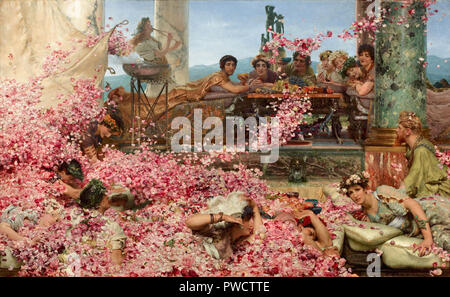

The setting appears to be a time of festival: the woman and the standing man wear garlands of flowers on their heads, and there is a pile of roses on bench, although the specific type of rose depicted was not developed until the 19th century. Four listeners stand, sit or lie on a marble bench and the marble floor, dressed for a festival: one man standing, another man lying prone in goat skins (perhaps a shepherd), and a couple reclining, holding hands, with musical instruments: a man with the cithara and a woman with a tambourine. It is unclear whether the man is intended to be Homer himself or somebody else. To the right, below Greek letters on a wall spelling ΟΜΗΡ (' Homer'), a young seated man with a laurel wreath on his head appears to be reciting from a scroll, although he has looked up from the text to his audience. Description Ī Reading from Homer depicts a scene on a marble balcony in ancient Greece, overlooking the sea. Pentimenti show that the composition continued to evolve: for example, Alma-Tadema changed the speaker's arm, which had been thrown out in a dramatic declamatory gesture. After working on the painting of Plato for a considerable time, Alma-Tadema was still dissatisfied with the result and he repainted the work afresh in early 1885, ultimately producing a similar painting which became A Reading from Homer.

The commission was for a larger work which was originally intended to depict Plato teaching philosophy to a small group of followers arranged around the marble courtyard of a temple precinct overlooking the sea, with Plato seated on a marble chair between the columns of the temple. banker Henry Gurdon Marquand (1819–1902), after he had acquired a small Alma-Tadema painting, Amo Te, Ama Me (1881, oil on panel, 7 in × 15 in (18 cm × 38 cm), now in the Fries Museum, Leeuwarden).

The painting was commissioned in 1882 by the U.S. The painting has been in the collection of the Philadelphia Museum of Art since 1924.

It depicts an imaginary festival scene from ancient Greece with youth reading poetry to a small audience on a marble balcony overlooking the sea. A Reading from Homer, oil on canvas, 91.8 cm × 183.5 cm (36.1 in × 72.2 in), Philadelphia Museum of ArtĪ Reading from Homer (sometimes Listening to Homer) is an oil-on-canvas painting executed in 1885 by the English artist Lawrence Alma-Tadema.


 0 kommentar(er)
0 kommentar(er)
